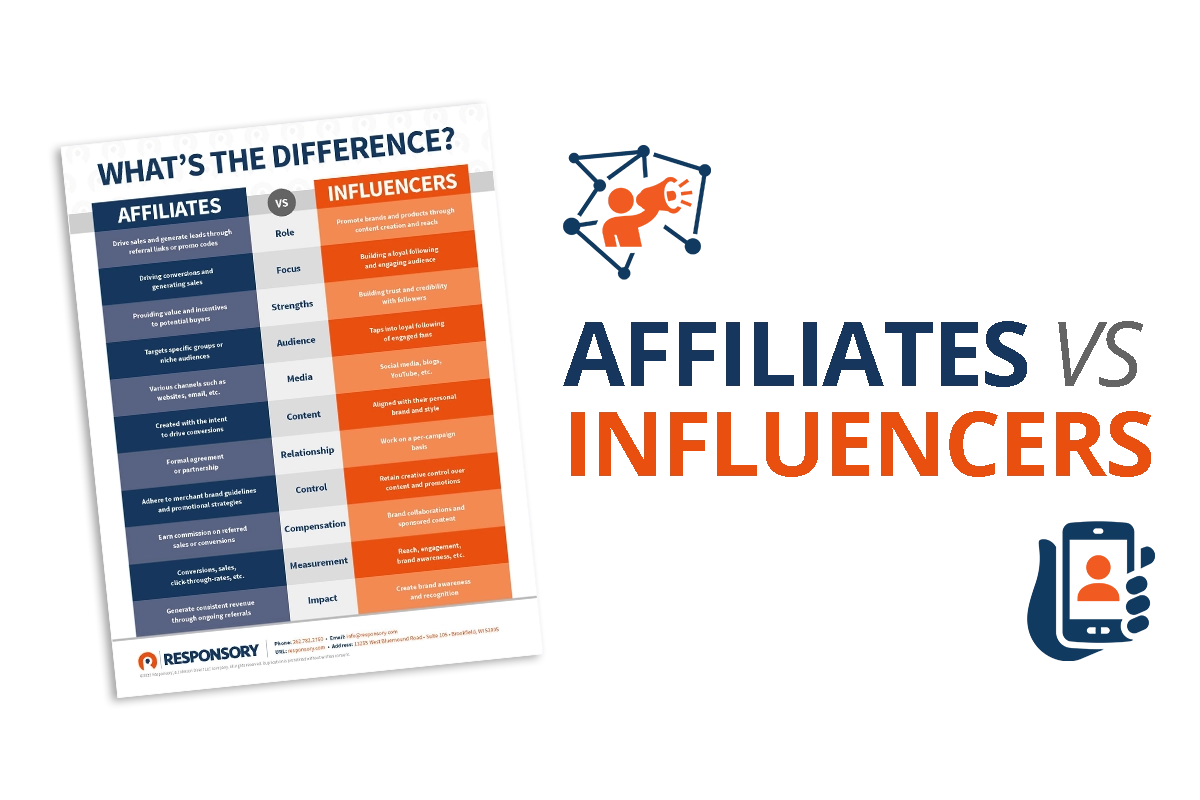Integrating an affiliate marketing program into your digital strategy can help you tap into new markets, boost sales, and enhance brand visibility. Find out if your business is a good fit for affiliate marketing and learn how to get started.
Not a day goes by that I don’t have to scroll past some content creator on my FYP promising to teach me how to generate income while I sleep. While I don’t begrudge their hustle, most are just going to tell me to become an affiliate marketer. And, in the words of Sweet Brown, “Ain’t nobody got time for that.”
My aversion to grind culture aside, the fact remains that affiliate marketing is big business. In the US alone, businesses spent $8.2 billion in 2022 on their affiliate programs, and it’s estimated that affiliate marketing spending makes up 16% of all online orders with affiliate marketing consumers spending 31% more than the average buyer.
If your company sells products or services online, establishing an affiliate program may be the missing piece of your digital marketing strategy.
What is Affiliate Marketing?
Affiliate marketing is a performance-based marketing strategy where businesses (referred to as merchants or advertisers) partner with individuals or other businesses (referred to as affiliates or publishers) to promote their products or services. In this arrangement, affiliates earn a commission for every sale, lead, or action generated through their marketing efforts.
Here’s the nuts and bolts of how it works:
What’s the difference between affiliate marketing and influencer marketing?
Check out our free infographic to find out! >>
Why Are Affiliate Marketing Programs So Popular?
A survey conducted by Rakuten and Forrester Research found that 8 in 10 merchants operated affiliate marketing programs to enhance website traffic and drive sales – and an overwhelming 90% regarded affiliate marketing as a crucial component of their overall marketing strategy. Additionally, a significant majority (more than 80%) of advertisers allocated approximately 10% of their marketing budget specifically for affiliate marketing initiatives.
Affiliate marketing programs have gained popularity among businesses for a variety of reasons, but some of the biggest benefits include:
- Affiliate marketing allows businesses to leverage the marketing efforts of affiliates without upfront costs. Merchants pay commissions only when desired actions are completed, making it a cost-efficient strategy.
- By partnering with affiliates, businesses can tap into the affiliates’ existing audience and marketing channels, expanding their reach to new and targeted audiences.
- Since affiliates earn commissions based on their performance, they are incentivized to drive quality traffic and generate conversions. This aligns the interests of the affiliate and the merchant, resulting in a mutually beneficial relationship.
- It reduces the risk for businesses as they only pay for successful referrals. Unlike traditional advertising where businesses bear the costs upfront, affiliate marketing minimizes financial risk.
- As businesses recruit more affiliates and expand their network, the potential for increased traffic and conversions also grows. Affiliate marketing offers scalability and the ability to reach a wider audience as the program expands.
Is Affiliate Marketing Right for Your Business?
Not every business is a good fit for affiliate marketing. When determining whether to add it to your digital marketing strategy, keep in mind your product or service offerings, brand reputation, profit margins and whether you have the time and resources to manage a program long term.
How to Build an Affiliate Marketing Program
Once you’ve determined that affiliate marketing makes sense for your business, it’s time to set up a program that helps reach your goals – and top-notch affiliates.
- Define your program objectives: Outline clear and measurable goals for your Affiliate Marketing program. Whether it’s driving sales, increasing brand visibility, or expanding into new markets, having specific objectives will guide your program’s structure and determine the metrics for evaluating success.
- Select an affiliate network or in-house program: Decide whether you want to join an established affiliate network or create an in-house program. Affiliate networks provide access to a large pool of affiliates and handle administrative tasks, while an in-house program offers more control and customization options.
- Establish commission structure and terms: Determine your commission structure, including the percentage or fixed amount affiliates will earn per sale or lead. Consider factors like product pricing, profit margins, and industry standards. Define the terms and conditions of your program, including cookie duration, payment schedules, and promotional guidelines.
- Attract and onboard affiliates: Develop compelling marketing materials, such as banners, text links, and product descriptions, to assist affiliates in promoting your offerings effectively. Reach out to potential affiliates through targeted outreach, leverage affiliate directories, and participate in industry forums. Streamline the onboarding process and provide affiliates with comprehensive training and support.
- Track and monitor performance: Implement robust tracking mechanisms to accurately attribute sales and track affiliate performance. Affiliate tracking software or third-party platforms can provide the necessary tools for seamless monitoring. Regularly analyze data, identify top-performing affiliates, and optimize your program based on the insights gained.
- Communicate and manage affiliate relationships: Foster open communication channels with your affiliates through newsletters, forums, and dedicated account managers. Encourage feedback, address concerns promptly, and provide them with promotional updates, exclusive offers, and performance incentives to keep them motivated.
- Review and ensure compliance: Ensure that affiliates adhere to your program’s terms and conditions and maintain brand consistency. Regularly monitor their promotional activities, review content, and take necessary action against fraudulent or non-compliant practices. Protect your brand reputation by maintaining high standards throughout the program.
Final Thoughts
If your business has the right products, pricing, reputation, resources, integrating an affiliate marketing program into your digital strategy may seem like a no-brainer. While leveraging the power of affiliate partnerships can help you tap into new markets, boost sales, and enhance brand visibility, it’s important to make sure it aligns with your business goals.
An affiliate program is a commitment. It takes careful planning and thoughtful execution to get started, then dedicated support and resources to ensure its success. Failure to do so could result in lasting damage to your brand and credibility.
Building, managing and maintaining an affiliate program can be a lot of work, but you don’t have to do it alone. Whether determining where an affiliate program fits in with your digital strategy or creating marketing materials to help affiliates succeed, Responsory is ready to serve as guide or aide throughout the process. Call or contact us today to get started.


While both affiliate marketing and influencer marketing involve collaborating on promotions, affiliates and influencers are not the same. Download our free infographic to understand the nuances between these two impactful marketing strategies and learn how to harness their strengths to drive your brand’s success.










